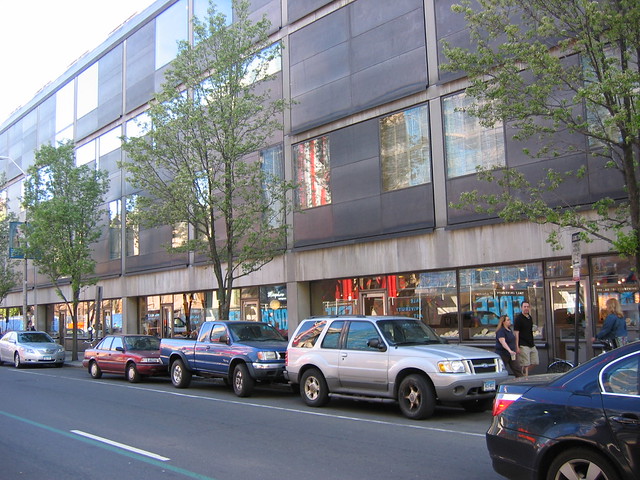Quote:
Originally Posted by Nowhereman1280

^^^ You see, I think that's the opposite of the direction one should go to engage a pedestrian. While that is "ornate" it certainly is not engaging because the ornament is basically a fence that makes the pedestrian feel removed from the design. Just look at the buildings on either side where they open up to and greet the street compared the white picket fence of squiggly shit that forms a wall right up against the sidewalk.
|
Not only could you argue that the gate itself is "engaging" (really, I'm not sure how you could argue otherwise), the 'perforations' allow you to quite easily peer inside. IIRC, the physical separation is necessary (I believe they're townhouses). And when it is, a giant pane of glass (still a wall, mind you) is not the only or necessarily the best solution.
Quote:
Originally Posted by ardecila

Good point. The modernist tendency is to invest a lot of time and effort developing a system/set of rules, and then extending that system across the site. While one segment may be great in isolation, it can become stifling and monotonous when repeated en masse - especially if the elements aren't particularly human-scaled in the first place.
|
Kahn's Yale Center for British Art balances these issues quite well, I think: an institutional building (museum, library, archives, conservation labs, reading rooms) requiring a careful handling of natural light, but it's built to the lot lines in a very urban setting (I don't think you can emphasize enough what a rarity this was for similar buildings from this period) with first floor retail wherever it fronts a street. The monotony seems like it could be problematic but it never is, maybe in part because walking alongside it leads you either to or away from the dramatic recessed entrance to the museum.
It's hard to quickly find pictures that do it justice, and I'm a little hesitant to post what I've got lest someone who isn't familiar with it gets the wrong impression, but here are a few:
entrance
 source
source
in front of entrance, looking out
 source
source
looking in
 source
source
Chapel Street façade
 source
source
 source
source
Froyo World along (aptly named) High Street at night

source
https://lh4.googleusercontent.com/-F...IuM/11%2B-%2B1
In his addition to the Yale University Art Gallery (literally right across the street and designed much earlier during his career), Kahn took a much, uh, different approach:
 source
source
Although it's beautiful from other angles...
 source
source
...especially at night (check out the BAC on the right):
 source
source



